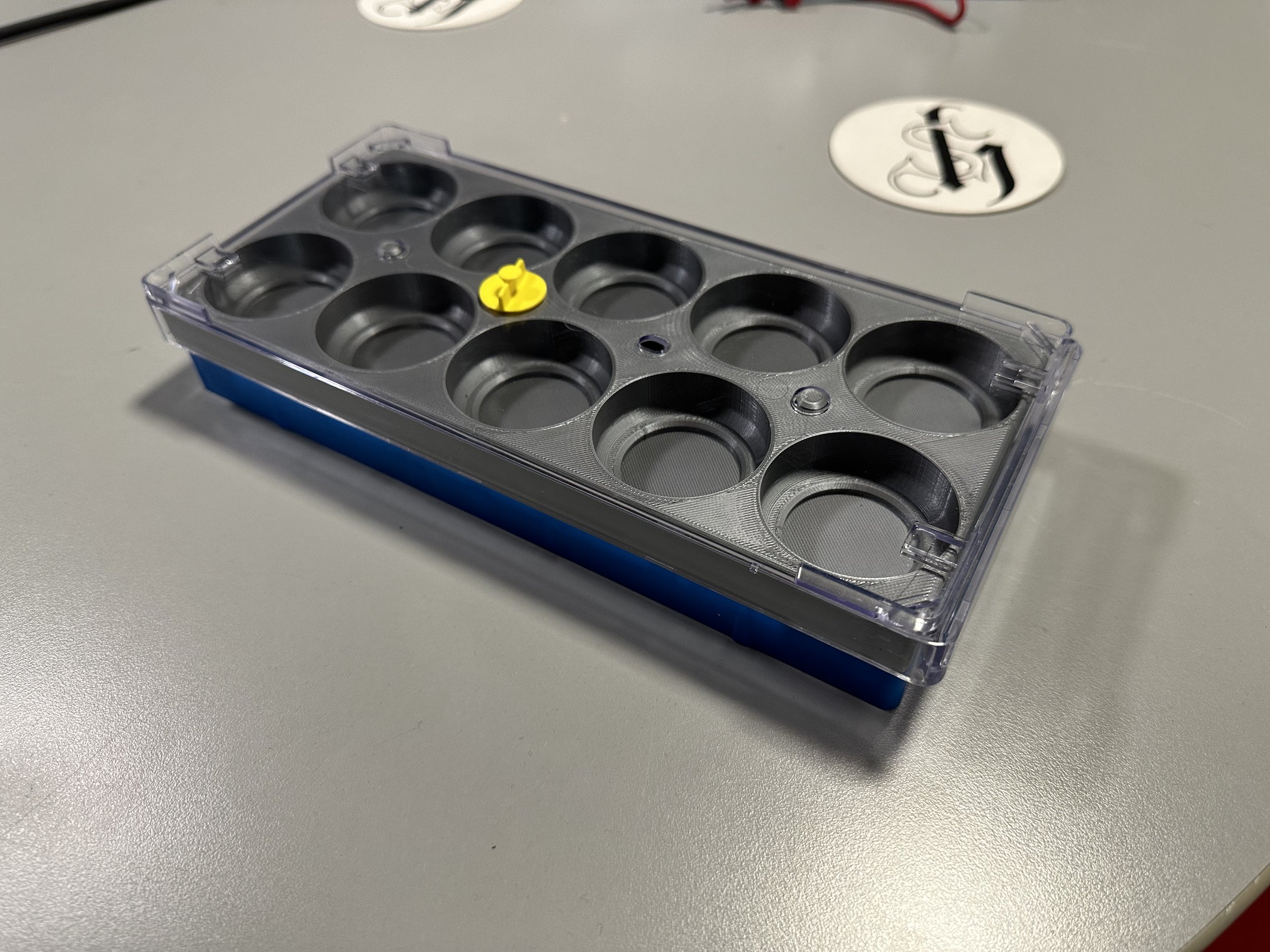When you need a thing, make a thing.
If you walk into any jeweller or watchmaker’s shop, you’ll find a wide array of storage systems. These interlocking trays seem to be nearly ubiquitous in watchmaker’s studios. They have a nice clear case (which conveniently can have paper sheets slipped into them), and their colour coded key system is great for locking together up to five trays along with the lid. They’re also reasonably inexpensive, and because of that I’ve got dozens of them around the shop. But they’re also very limited in the available internal storage layouts. Enter the 3d printer. As I’m currently turning cases for multiple watches, I wanted to keep them organised and secure between operations. Once assembled I’ll need to keep cases together with dials, hands, buckles, straps, screws, and movements for a complete watch.
To that end I modelled an empty version of the case which is compatible with the original lids, keys, and trays. This is the foundation for modelling custom tray layouts for each stage of making and assembling the watch. These were printed in PLA on a Prusa printer. They take around 8hrs to print, and are roughly half the price of the original trays. But really cost savings wasn’t the goal here. The only thing I may do for the trays with finished parts is pad or flock the insides in order to offer some protection for the parts.
If you use this tray system and want to make your own customised trays, I’ve published the empty tray over on Thingiverse. The original trays are available from many suppliers. Here is a link to Cousins UK's page for them.
I've been modelling a bunch of things for 3D printing lately, and several might be useful for other people. I'll keep posting about them here, and sharing them over on Thingiverse.


